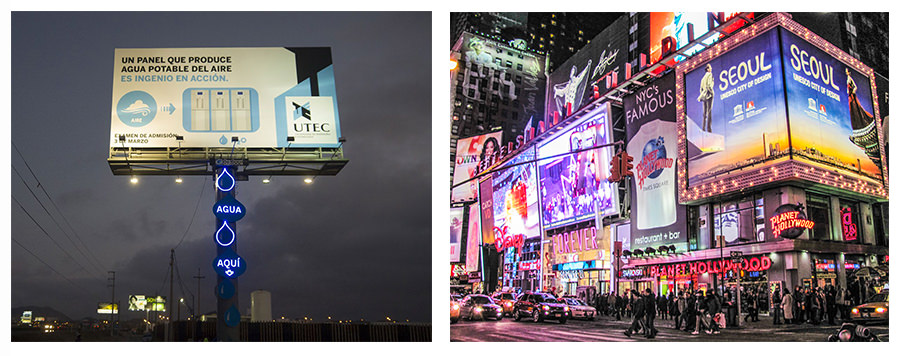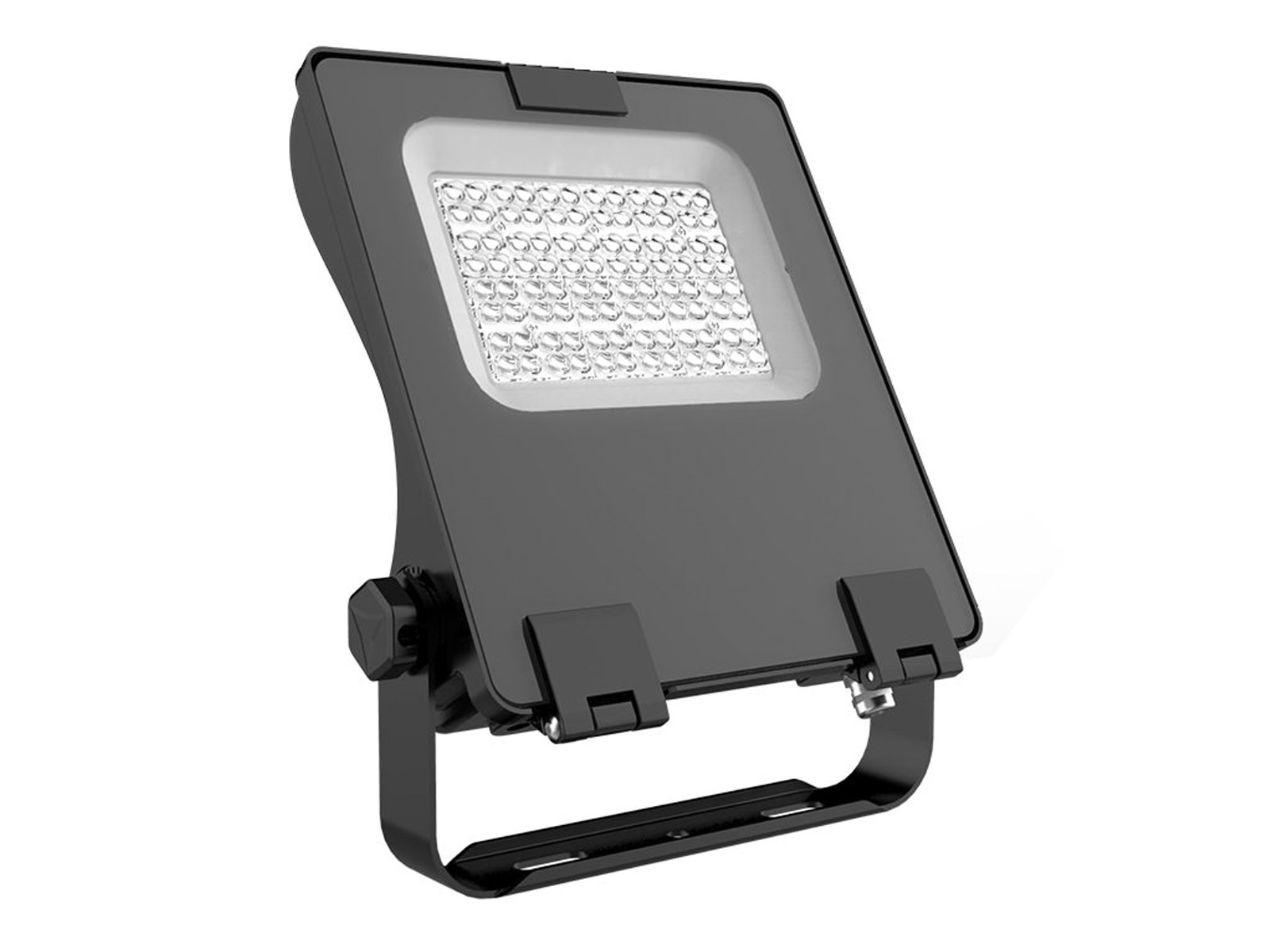A billboard is a large advertising structure located outdoors, designed to build brands or promote products. Billboards are typically placed in high-traffic areas or along roadsides to capture the attention of pedestrians and drivers. This means a billboard should be attractive. Once pedestrians or drivers notice and read the advertisements on the billboard, the investment becomes worthwhile.
However, as the saying goes, safety first. Too attractive billboards will cause distraction and it is dangerous for drivers and pedestrians. Additionally, improper illumination of billboards tangles their identification for traffic. Therefore, the right illumination of billboards plays an important role in ensuring safety as well as gaining attraction.

Billboard classification
There are two kinds of billboards: traditional and digital. The main difference between them is the way they provide lighting, which enables drivers or pedestrians to read the message.
Traditional billboard is printed with characters and/or pictures on a paper or vinyl sheeting and attached to the facades of a building or a sign surface. Paper and vinyl sheeting are definitely unable to generate light. Traditional billboards can be seen by the light shining onto or reflecting off their surface. The sun and sky shine onto the billboard and reflect the light off the surface during daytime, making the billboard visible.
When it comes to night, a billboard requires an external light source for illumination. As a billboard is commonly installed on high poles, powerful LED flood lights are equipped on the top and/or bottom of the board to provide sufficient lighting.
Advanced technology makes billboards able to illuminate by themselves. This type of billboard is called a digital billboard. Digital billboards are visible because of the light emitted by the board. In contrast to traditional billboards, digital billboards must be adjusted to higher light levels for clear visibility under bright sunlight during the daytime.
But at night, higher light levels may cause glare, and it will be too bright to read. Many drivers have complained about the excessive brightness of billboards. The excessive light made it difficult to distinguish directions and traffic conditions, putting them in danger.
Requirements of billboard illumination
Since digital billboard can emit their own light, we would like to talk about traditional billboard lighting and how to illuminate it in the right way.
Consider impacts on humans and the environment
The primary point for the right billboard illumination is the impact on humans and the environment. In other words, we should prevent light pollution when illuminating billboards.
It goes without saying that unnecessary greater wattage and higher light levels are completely a waste of energy, and it is harmful to the environment and humans. Careful simulation of lighting design will not only save energy but also help you save costs. Though it sounds difficult, consulting a professional lighting manufacturer helps you get the job done in half of the time. AGC provides lighting design and tailored fixtures. Contact us and get your own lighting solution.
Illumination of billboards is aimed to light up the advertisement, making it visible and readable by drivers and pedestrians. Redundant light will cause trespass and glare. Fixtures spread the light from billboard to dark sky, nearby residences, or plants, disturbing humans and animals. Furthermore, glare is dangerous as it is discomfort, disability, and excessive light, which will lead to a temporary lack of recognition and response in busy traffic.
Lighting contrast is important
Lighting contrast is another critical factor for the right billboard illumination. Contrast is the difference in the brightness between objects and the background. Our eyes can discriminate objects on the background with two conditions: the background and object color are different, or the background and object have a certain brightness contrast. The brighter object and the slightly darker background will be great for better vision.
Conversely, if the background is brighter than the objects, visibility will be significantly reduced. In poor lighting conditions, especially the lack of luminance difference, it may cause false visual phenomena, then distort the perceived object and have an impact on the judgment. As a result, the light level should be adjusted according to the ambient brightness.
For example, the illuminance of billboards is supposed to be lower at night in open fields, like highways. But for the business areas, the billboard illuminance value should be slightly higher than the ambient environment for more competitive attraction.
Recommendations for billboard lighting
Every area has standards or regulations that are applicable to billboard illumination, and we should take the relevant regulations and standards into account. As regulations and standards of billboard lighting vary from area to area, we will show the common recommendations for it.
Recommendations for the illumination of a billboard are as follows:
- IES (Illumination Engineering Society) recommends that the illuminance levels should be 20 to 100 footcandles.
- Uniformity (the ratio of maximum to minimum light level) should be 4.0 or less for billboards.
- Billboards should not be illuminated within 300 feet of residences.
- The billboard should not be illuminated before opening and after closing for business advertisements.
- Light sources should not be seen by drivers or pedestrians directly.
- Lighting fixtures with CRI higher than 80 would be optimal.
Common formulas for billboard illumination
Traditional billboard is generally mounted on poles or buildings above the ground at a certain height. They are also of various sizes. There are some simple formulas for billboard illumination associated with their size or height. However, please note that these formulas are only for reference, specific illumination design for billboards shall be made according to concrete circumstances.
If the height of the billboard is less than 8 meters and it is wide, a lighting fixture can be installed on a single side with a distance of about 1 to 2 meters. A wide beam angle lighting fixture will be more suitable for this type of billboard.
For the wide billboard in the height between 8 to 12 meters, it should be illuminated from double direction, top and bottom. This type of billboard also fits lighting fixtures with wide beam angles. The distance of the lighting fixture should be 1.5 to 2.6 meters.
Another type of billboard is tall and thin. A lighting fixture with a narrow or medium beam angle is applied to it. The location of the lighting fixture depends on the height of the billboard light. For the very tall billboard, two sides of lighting fixture installation will be optimal.













